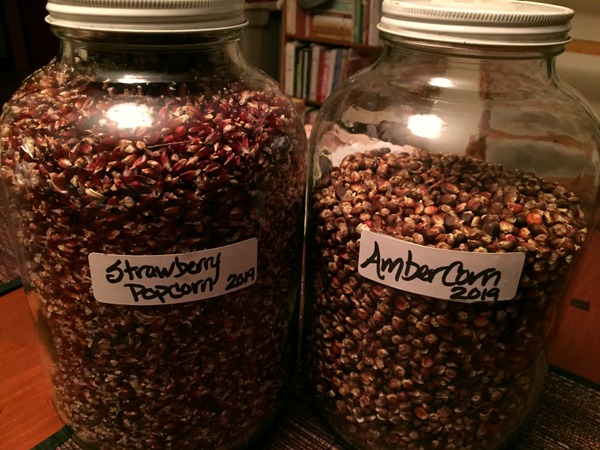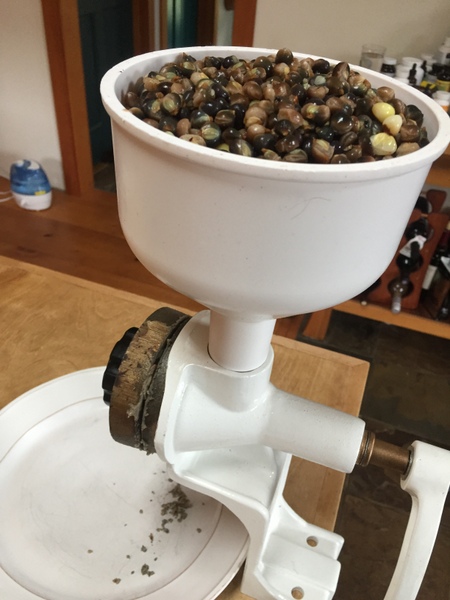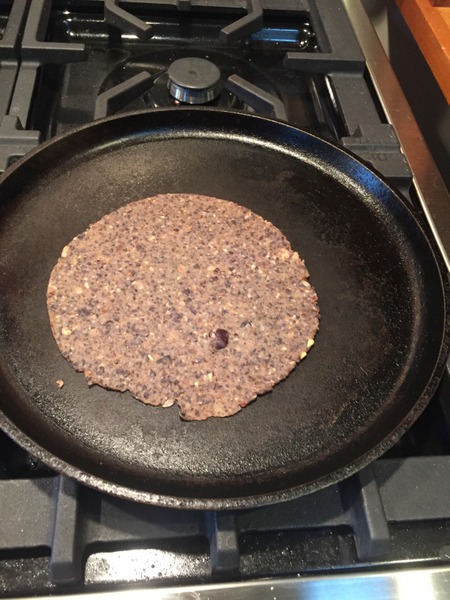Happy February! Recently I’ve been working in the kitchen with my corn stores and thought it was time to share my love of this beautiful plant.
I didn’t set out to love corn. Being a bit of a non-conformist, I wasn’t so interested in the standard crops when Jeff and I first started gardening. We certainly grew sweet corn, red tomatoes and basil, but I wanted to grow and taste the things that I never had before, that weren’t available on supermarket shelves. This has come to mean new or rare varieties of the same crops; interesting shapes and different colors; warty squash, black tomatoes, blue corn. We found rare seed collectors and heirloom seed companies and bought from them. I still do. Check out my latest favorite here. And over the years I have fallen in love with corn.

Not sweet corn; not that yellow or white summer corn. Don’t get me wrong, I love the taste of a well buttered and salted ear of summer corn, hot off the grill or freshly steamed. But I have almost no interest in growing it.
I love the flint or dent corn; grown for grinding, baking, cooking and storing. Hung from rafters and stored all winter or many years if needed. I love the different colors of the different varieties that are like magic gifts of colorful jewels when you peel back the husks. I get to admire their beauty all year; first as they are harvested and peeled open; then as they dry from my rafters in the fall; again when I shuck and store the kernels in gallon jars and place them on my shelves, and finally the fullness of their beauty, absorbed completely when ground and made into delicious meals like polenta, tortillas and cornbread. These links lead you to some of my favorite recipes.

Strawberry popcorn 
Strawberry popcorn 
Amber corn braid being shucked 
Jarred and ready for use!
One of my favorite things to learn about corn, was the process called nixtamalization, resulting in what we know as pozole or hominy. The flour/dough that is produced is called Masa or Masa Harina. This is the process of soaking corn kernels in lime water to remove the husks, allowing the absorption of more nutrients when eaten. The lime traditionally comes from wood ash and now limestone powder you can purchase. This tradition prevents the disease pellagra, that many have suffered due to lack of niacin (B6). It’s no surprise that this traditional process makes B6 available from the corn. Once again we find the wisdom in the oldest of traditions and the re-remembering of how to nourish ourselves well. Once the corn is soaked and husks removed, it is then ground while wet, creating a dough that is then pressed and cooked into tortillas. I also use this dough for polenta or cornbread or to thicken soups.
Here are a few images from my process. I let the corn simmer in lime water, on the wood stove overnight. In the summer I will use my stove top to simmer all day. Then I strain and rinse the corn until all skins are removed. I then grind the corn (I have also used my vitamix on low, that also works very well), press the dough and cook. I store the dough frozen in ziplock bags for later use in any way I would use corn meal. I also freeze bags of the hominy (unground corn kernels) for adding to soups, casseroles, sautes and as a side dish by itself to any meal. There are so many good videos on how to do this process and the results with different varieties of corn. I have included my favorite here.
I am so excited to be sharing this process this summer in my Women’s Gardening Apprenticeship! If you’d like to join me or know someone who would, please follow the link and share this email.
I hope you too are finding creative ways to work and play this winter. Follow your passions and they will always lead you to something delicious.
UPCOMING EVENTS
If you or anyone you know is interested in my gardening apprenticeship program come and learn more about it at the Tompkins County Public Library.
I’ll be hosting 4 time slots with an introduction about me and the program and a short slideshow to help get a feel for what you would be learning. This is a great time to meet me and ask questions. You can come for just a few minutes or the whole hour. I look forward to seeing you!
We will be meeting in the Schwarz Jacobson meeting room on:
Tuesday February 11th 6pm to 7pm
Thursday February 27th 6pm to 7pm
Wednesday March 11th 7pm to 8pm
Wednesday March 25th 6:30pm to 7:30pm








